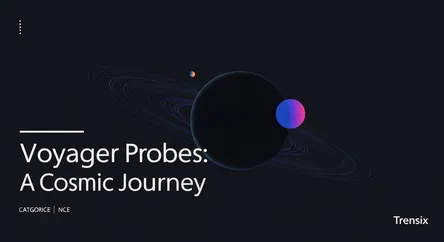Science
Voyager Probes: A Cosmic Journey

Explore NASA's Voyager probes, the twin spacecraft that are humanity's farthest explorers, now venturing through interstellar space beyond our solar system.
What is it?
The Voyager probes are two robotic spacecraft, Voyager 1 and Voyager 2, launched by NASA in 1977. Their primary mission was to study the outer planets—Jupiter, Saturn, Uranus, and Neptune. After completing their planetary tour, they continued their journey, eventually crossing into interstellar space, the region between stars. They are now the most distant human-made objects from Earth. Each probe carries a Golden Record, a gold-plated phonograph record containing sounds and images selected to portray the diversity of life and culture on Earth, intended as a message for any intelligent extraterrestrial life that might find them.
Why is it trending?
The Voyager probes frequently make headlines due to their incredible longevity and the challenges of communicating with them over vast distances. Recently, Voyager 1 experienced a technical glitch, sending back unreadable data for months. News trended as NASA engineers ingeniously diagnosed and fixed the issue from billions of miles away, successfully restoring communication. These events highlight the remarkable endurance of 1970s technology and the ongoing discoveries the probes make in an uncharted cosmic environment.
How does it affect people?
The Voyager mission represents humanity's innate drive for exploration and knowledge. The probes provide us with our only direct measurements of interstellar space, fundamentally changing our understanding of the boundary of our solar system. For many, they are a source of inspiration and wonder, symbolizing our reach for the stars. The Golden Record, in particular, captures the public imagination as a hopeful message in a cosmic bottle, a testament to our desire to connect with the universe and communicate who we are.